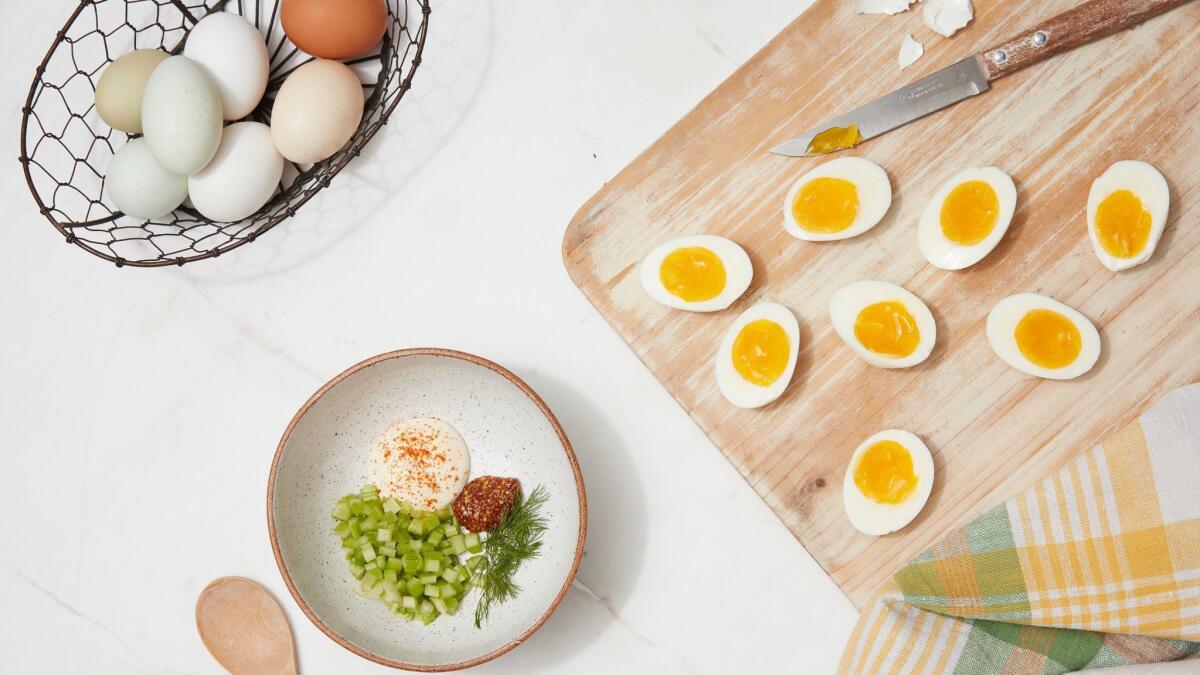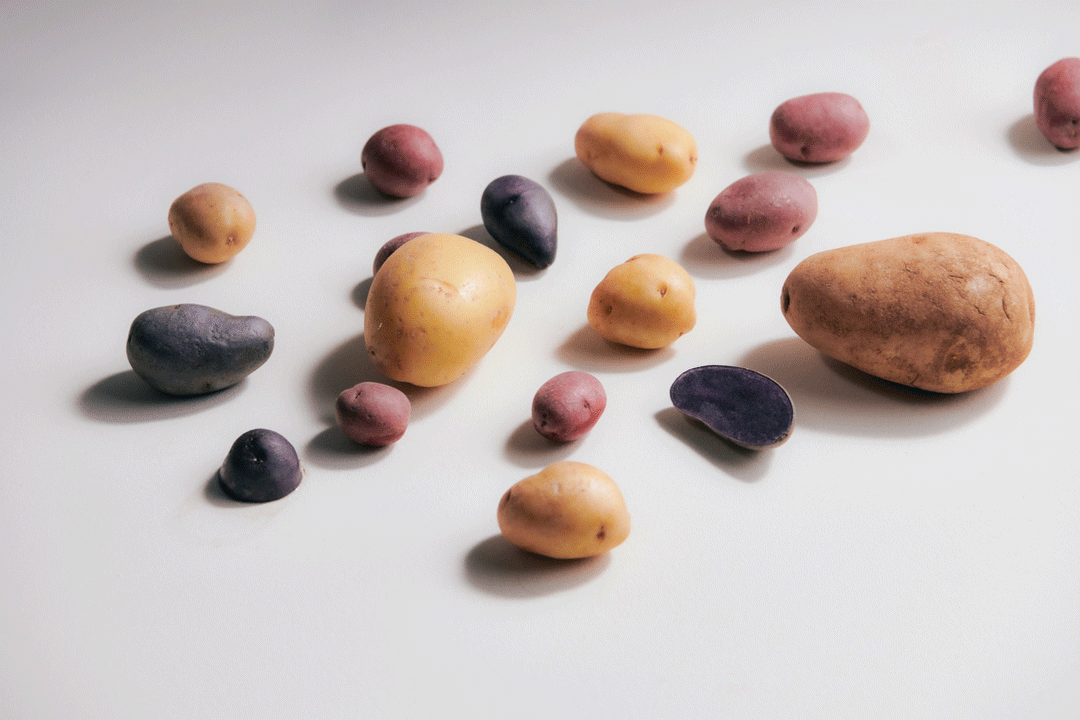How to make jammy eggs

- Share via
There’s no one way to a boil an egg, and my cooking colleague Ben Mims and I each have our own preferred way. What we do agree on — because it’s true — is that older eggs are easier to peel. That doesn’t matter much for egg salad, but helps when you’re looking to preserve the egg’s shape for other dishes.
Ben:
When it comes to hard-boiling eggs, precision is key. That’s why I like to drop eggs into already-boiling water and then time them for 8 minutes exactly, which produces a perfectly just-set egg yolk that’s slightly jammy but not runny at all. If you start with the eggs in the water first, you run the risk of overcooking them since stoves heat water at different rates. But for the boiling method to work best, be sure to let your eggs sit at room temperature for a couple minutes so they’re not ice-cold from the fridge. Otherwise, they can split open from the temperature change when they hit the boiling water.
Genevieve:
Eggs are so sensitive to temperature, they need to be carefully controlled to boil to the right consistency. Although boiling water is always a set temperature, eggs coming from the fridge or countertop are not. That’s why I prefer to start with cold eggs straight from the fridge in cold water. Even though water may come to a boil at different rates depending on a stove’s power, boiling water is always the same temperature. Once the water boils, I cover the pot and turn off the heat, letting the eggs sit in the hot water for 6½ minutes — which consistently yields jammy eggs.
More to Read
Eat your way across L.A.
Get our weekly Tasting Notes newsletter for reviews, news and more.
You may occasionally receive promotional content from the Los Angeles Times.









